This is a question I pose, and I do not propose to have the answer. When Sosai Mas Oyama created Kyokushin, he created it to be the ultimate martial art at its time, combining the base he had in Judo, Shotokan, Goju-ryu and Taikiken.
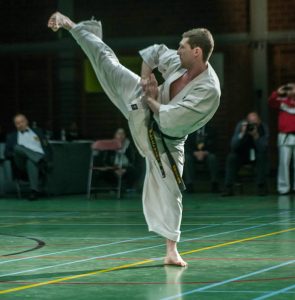
Sensei Darren Stringer
Kyokushin was built on hard practice, strengthening the mind and body, through perseverance, with a foundation of Kihon, Kumite and Kata.
I know many argue that Kata is useless, that the only way it can work is with diligent practice and breakdown of the bunkai, or application, and even then the jury is out on it’s effectiveness. However, it also imparts the practice of proper form, transitioning, distribution of power through torque and hip movement. It teaches Kime and focus. It has many attributes that improve the martial artist.
It is true you can be a fantastic fighter without kata. Look at Kickboxing as a prime example, but it isn’t Kyokushin. Though much of modern kickboxing (Dutch style, K1) was built with Kyokushin principles and foundation.
However, there is a movement in certain areas and organizations to remove Kihon and Kata training from Kyokushin all together, or not practice it or use it as a grading requirement. There are high-ranking black belts in Kyokushin who do not know basic Kyokushin kata. Are they still Kyokushin?
Historically, all the great Kyokushin champions knew and practiced kata, Matsui, Midori, Kazumi, Filho, etc, and they continue to teach and practice Kata today. But it seems sometime after the passing of Sosai, kata practice in some groups and areas fell out of practice, with the focus on fighting.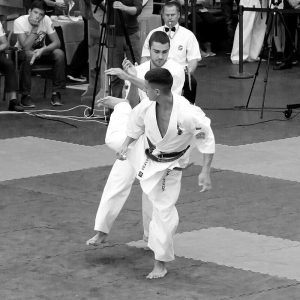
Sure, they can be fantastic fighters, but are they Kyokushin? What constitutes Kyokushin? Is Kyokushin only a philosophy, or is it also an amalgamation of the physical components of Kihon, Kata and Kumite? Or both physical and philosophical?
What would Sosai Mas Oyama say about the situation if he were still alive?
For myself, Kata training is important for varied of reasons.
Body conditioning (stance training), mental awareness including; zanshin (relaxed awareness), fudoshin (composure), mushin (no mind), shoshin (open mind), kensho (insight), health, visualization, proper form and technique, control, proper hip rotation, and the list goes on.
For an instructor it helps with transmission of knowledge and student goal setting, as kata take a long time to learn and contain a systematic way to evolve.
And finally, unlike kumite, kata can be practiced and performed throughout your life, well into your senior years. It is rare to see seniors kickboxing and fighting, perhaps a little light sparring, but you will find many masters of karate still working, perfecting and deriving meaning from kata practice well into their 80s.
For myself, without kata, karate loses it’s “martial art” and becomes a combat sport like kickboxing, boxing and wrestling. Not that there is anything wrong with that, but for myself, there is something missing and I am not sure if I still call it Karate Kyokushin.
Osu!
Tensho Kata led by Shihan David Pickthall (IFK Vice-President)
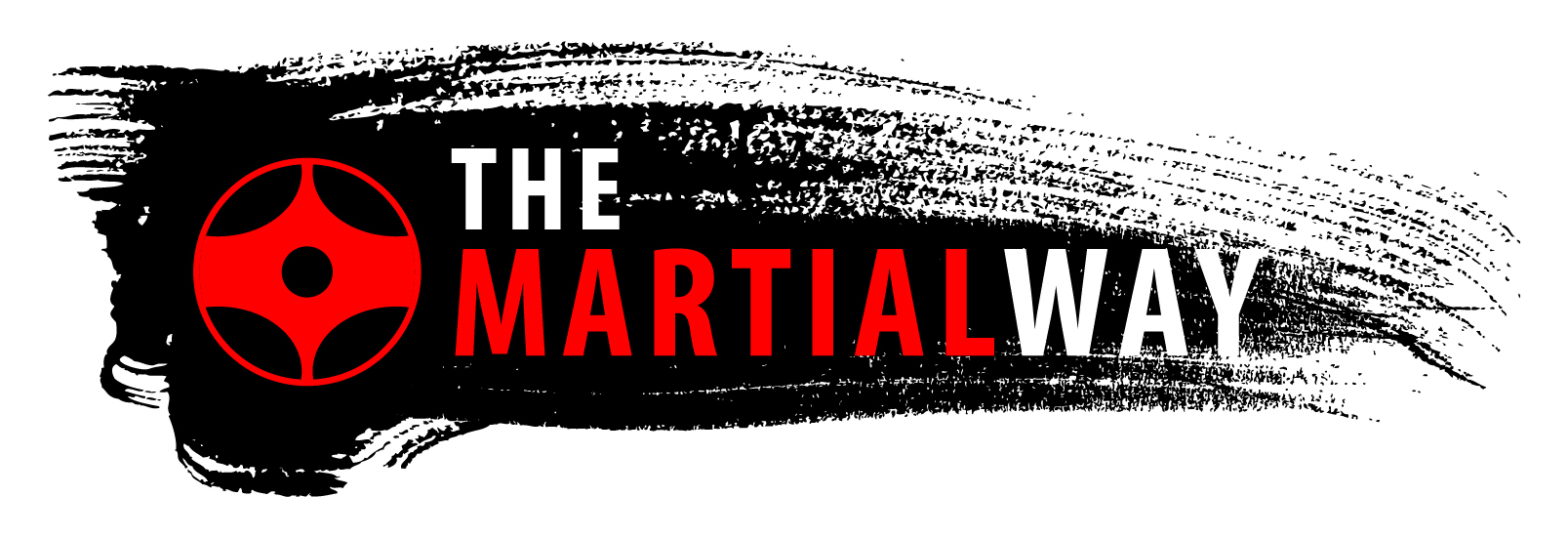
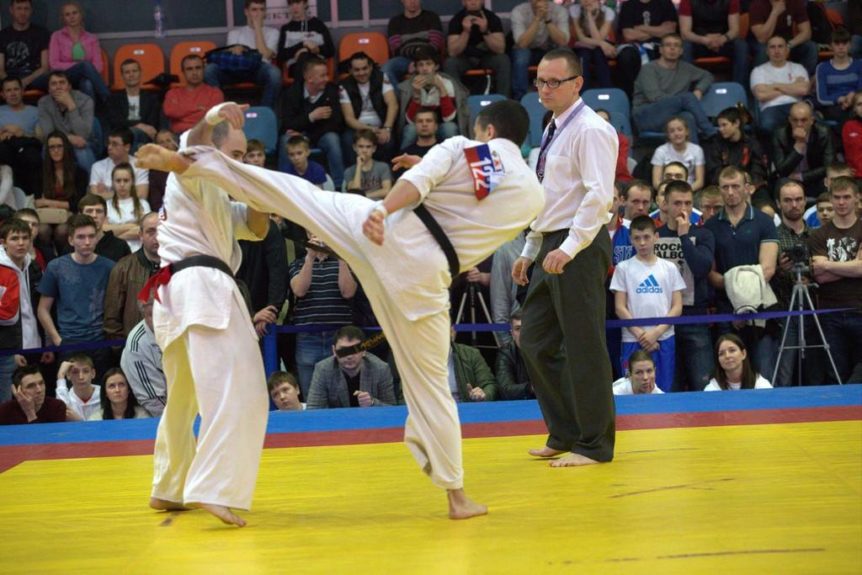
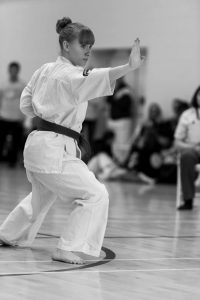
Comments 31
Pingback: Is Kyokushin Karate still “Kyokushin” without Kata? - Time to be United!
What is the social utility of a fight with no real combat? What is the social meaning of a martial art that will not protect you in a real brawl? There are fighters, and there are diletants – gnostic black-belts full of knowledge – and uncapable of defending themselves in a real fight.
Kata is useless. As people say here, “everybody can do it”. Kata is a dangerous ilusion. All martial arts in Japan, after the II Great war, were castrated. Emasculated to avoid violence in a defeated country.
I learned jiu-jitsu between 1962 and 1967. It’ powerful and real. And karate shotokhan in the 80’ies. Its beautiful, and filosofical. And a big disapointment. It will not protect the child, the meek, the weak or the woman, in a moment of danger. A martial art is useless unless if it’s for real. I’m 64 years old, and that’s my take. I’m not here to please anybody, and I do not allow myself to engage in argumentations of anykind. That’s the truth, and there is no other, concerning martial arts. They must to serve the people, not small groups of selected “iniciados”. À tout à l’heure.
Someone that is conditioned in Kyokushinkai and has real sparring practice (Kumite) will have 90% of what you meet on the street beat when it comes to a fight. Remember, Sosai Mas Oyama said it mainly comes down to a test of stamina.
A karateka has 1000% times the stamina of your average bar brawler.
So the whole “is it applicable in a street fight” argument is ridiculous. I suggest those wishing to dilute martial ARTS with that mentality to carry a 6 shooter on their sides, jump on a tread mill 30 mins a day, and give up the ART part altogether.
Karate is part of a spiritual journey. It teaches more than self defense. We are combating ourselves and the Kata helps discipline us. Kyokushin is the society of ultimate truth! Again, Karate is like fixing a lobster tail for dinner and “street fight” practice is the equivalent of a can of tuna.
Both will give you a full belly and some protein, but don’t complain when the taste of lobster takes a lot of patience and selflessness.
OSU
Osu Shihan
Thank you for the information that you have provided us. Kindly use this e-mail. skura.mtshongwana@gmail.com
The reason I say “re-engineered” is because a lot people have mad bunkai too complicated and by saying a blocks are locks, throws etc. and then they show intricate moves that won’t work in fighting.
In regards to the original question, “is Kyokushin Karate style Kyokushin within Kata”, I would say yes. Most of what we practice and the way we practice, fight, etc. is recent. Some of the Knockdown groups practice traditional Kata and some don’t. Kyokushin and it’s offshoots exist because of the Kumite.
I do agree with you that Kata are a “dictionary” of techniques. Sensei Antony is a black belt in Shotokan and BJJ. So, I am sure he has incorporated into his system of Karate Jutsu. Most instructors have incorporated other arts because martial arts are always evolving and certain arts specialize. Yes, Karate and techniques from any style can be effective in fighting. It will depend on the fighter of course. But no fighter trains Kata to get ready for a fight. They spar.
Traditional Karate technique and Kata are based on martial combat (fighting). Karate was spread through Kata and these Kata represent certain styles. Karate is not that old, so it spread international there really was a platform to see it’s effectiveness, so we get sport fighting (point fighting leads to full contact to kickboxing, etc.). We see martial arts constantly changing. Many people out there have re-engineered bunkai to match MMA.
Author
Again, I agree with you no fighter trains Kata to get ready for a fight. Yes, they do some sparring, though much less these days. Mostly they work on fitness level and techniques, or as its called in Japanese, waza. So, no… kata is never used to train to fight or self-defence. It is only a dictionary and reference tool. You must train the technique, no mater what style.
As for saying karate isn’t old. Correct, but most of the kata, or more importantly, the bunkai and waza within in them far far predates karate, to its orgins in China and mainland japan. As for back as 1377 we know they were training in these fighting techniques. Much later they were put into reference tools.
I completely disagree with re-engineering bunkai to match mma. As…. Bunkai is mma. It’s time to make old-school new school again.
I want to share a video that shows Karate applied (throwing, grappling, and MMA) through sport. These are some of my students and how we apply Karate. This is from the European Championships.
https://www.youtube.com/watch?v=yOzRz2G3r9c
Scott,
First of all, the highlights are from various combat sports (boxing, kickboxing, muay thai, TKD, and MMA), not just stand up fighting. I am also a Judoka. You an look through my Youtube channel and Shidokan Atlanta dojo members competing in every style of combat sports (BJJ, MMA, Judo, and all of the stand).
I am familiar with the guys in the clip you put up and they have a lot of good material. But like many other bunkai specialist, they have cross trained (in styles other than Karate) and modified Kata techniques to mimic MMA techniques. A lot of the bunkai you see is not what was taught 40 years ago. A lot of what we see in Bunkai came about in the 90s when MMA became popular.
As for sport fighting, it is how martial arts have been popularized. People are attracted to what they can see applied, not theory. Mas Oyama created Kyokushin and modernized training training (influenced by Muay Thai and Kickboxing) and full contact Karate exploded on the scene. Other organizations (Kudo, Enshin, Shidokan, etc.), modernized their techniques and training. Some doing away with the traditional methods and some keeping some of them.
People will argue that Kata techniques are for real fighting and are too dangerous. Of course, people can’t practice eye gouges and Adam apple grabs. There is nothing so lethal in Kata that can be done in competition. Bones are broken, people get poked in the eye and throat, hit in the groin, etc. The practice of Kata is part of traditional Karate culture. The old school Okinawa practice of makiwara board and stone has been modernized with heavy bags and weight rooms. Because there wasn’t free sparring (hard) make in the day, they practiced partner drills. A lot of what we do (wearing of the Gi, Bowing, Japanese terminology, etc.) is because we enjoy a particular styles traditions and culture.
Author
Hi Richard,
Sorry I missed the grappling in your highlight… slipped by me.
I disagree that the Karate Culture guys modified Kata techniques to mimic MMA techniques. They simply took the techniques and practiced them with a resisting opponent.
I also disagree that the bunkai you see is not what was taught 40 years ago. For example Morio Higaonna has been doing it his entire life, along with many of the Okinawan teachers. There are a handful of westerns, like Patrick McCarthy.
I do agree that we see more of it now, because of MMA. However, it isn’t new. It was just forgotten about. When these arts came to the West, people only practiced the punching and kicking portion, so everything else was forgotten about. Sad, considering traditional karate is over 75% grappling and joint manipulation, and the rest strikes. Now it’s the inverse or even worse in many cases. Kinda of like the opposite that has happened with Jiu-jutsu, where its mostly focused on ground fighting and we don’t see much of the stand-up or strikes, because of the sport influence of BJJ.
You also keep referring to “kata”… in regards to fighting techniques, or comparing it to other things. I will keep reiterating that kata is nothing more than a dictionary, and not meant for anything other than a memory tool. I am speaking about the waza.
The old school Okinawa practice of makiwara board and stone is still used today in Okinawa, along with modernized heavy bags and weight rooms.
To say karate waza doesn’t work in mma or self-defense is simply not true. Sensei Vinicio Antony (instructor to legendary MMA fighter Vitor Belfort) has proven this with Belfort.
People see what they want to, or the opposite. They refuse to see what is right in from of them. And nothing will change their mind.
The question put in this topic is NOT which is better (kata or kumite) for fighting. Of course, Kumite is like going to a foreign country to learn a language, which is far better than learning a foreign language from your desk. You can depart straight away without knowing any word, but I prefer to learn gradually, systematically. Kihon is always good for conditioning, especially the way we do here, which one can call it “Power Kihon”, putting every energy you have in every single blow of kick, and that for hundres of it. Kata than is also good for conditioning, I know that the lower stand as Kiba Dachi is almost unpractical in a fight but the purpose is to strength the tigh muscle and experience balance etc. Karate is the whole system, why trying to remove Kata (and maybe Kihon, too) from it? I know, when your Karate is 100% a sport than you will do that, but my Karate is more than a sport to me. It is not about winning Kumite as much as I can, like in sport.
Kumite will give the Karateka a chance of handling the sucker punch, etc. a lot better than Kata practice because one will be used to contact, pressure, and stress. Through competition one learns how to deal with pain, pressure, etc. I would put my money a guy who can defeat 3 or 4 opponents in a tournament than the guy who practices Kata in a street brawl. Physical conditioning, sparring, impact training are more important whether fighting sport or reality. Karate could function without Kata, not without Kumite. In knockdown systems, some organizations have done away with traditional kata (Enshin, Sabaki, Kudo, etc.) and in all of the others (Kyokushin, Shidokan, etc.) that practice kata, the fighting aspect is most important.
Author
I totally agree that kumite is better than kata… because kata was never intended to be a training tool for this! I stress over and over that kata is not the answer. It is realistic application of the movements, ie. Bunkai. To say it doesn’t work is like saying mma doesn’t work. Most every move in mma is a technique from some fighting system that the athletes have drilled over and over. You must train the techniques of karate the same way as an mma guy.
So no, kata doesn’t help or work in a fight. But the techniques and applications found inside do. To say Karate could function without Kata, not without Kumite is simply not true. I challenge you to go to Okinawa and train inside a very traditional dojo and repeat that. They do no sport fighting, but drill extremely hard two-person every day, much the same was a mma school.
There are those who believe that there is no Karate without Kata. I have trained in various systems and in dojos and I come from the old school methods. And as a combat athlete and I will tell you that no drills are superior to using techniques against resisting non-compliant opponents trying to hurt you. I am as traditional as they come, but I also modern.
Here’s a clip of some my experience and you will say why I say this.
https://www.youtube.com/watch?v=UKbcFHQt-hk
Author
Again, I completely agree with you Richard, the only way to train is against resisting non-compliant opponents, which is the way its done in Okinawa, and some dojos in the U.S. I.e., the guys from Karate Culture https://www.youtube.com/channel/UCayr5nz5sJRrOPT55CzOFxw/videos
Nice highlights, but they are all stand-up sport. Not sure what comparison you’re making. If it was MMA then I could see a closer approximation, but stand-up kickboxing is a sport. Not saying it won’t help you in the street. 100% it will. But limited to one area.
Kata is shadow-kumite. Like every boxer needs to practice shadow-boxing, every Karateka needs to practice shadow-kumite.
The difference in shadow boxing as it relates to boxing is that boxer execute their techniques like they would fighting, whereas the techniques practiced in Kata don’t resemble what one does in Kumite. In boxing, one is only able to understand the essence of shadow boxing, he or she must have ring experience. In Karate, it is taught the other way around. Students are usually taught Kihon and Kata before they understand fighting. Ask a boxer or kick boxer how a technique works and they can explain and demonstrate it. Ask a martial artist a move in a Kata and it tends to get complicated. Bunkai is simple in that blocks are blocks and strikes are strikes. Even though the analysts will say they are throws and locks, the techniques don’t work like the theorize them to. To learn timing, distancing, reaction, and the ability to adapt, you can only learn that through fighting.
Author
While I agree with much you say Richard, I should clear up a couple things. Kata is no way shape or form shadow boxing, so the comparison doesn’t need to be made. Originally one was taught a technique and a kata was nothing more than a devise to use as a memory tool for solo practice.
I do agree with you that most practice karate ass backwards, and as I state above, this isn’t the case if you train in Okinawa for example. You are drilled every day in two person scenarios, much the same as you work with someone in BJJ. Kihon is taught along side of this. Again, not much emphasis is on the kata, other than to use as a memory tool. Much of the issues you mention, are Western problems, not found in Okinawa. However, in Japan they persist. As you said, “To learn timing, distancing, reaction, and the ability to adapt, you can only learn that through fighting.” I couldn’t agree more. I would point out there is a big difference though training for sport and street. Most street altercations aren’t squaring off with someone. It’s more likely a sucker punch, quick grab and a punch, etc.
Kata is practiced to pay respect to the traditions, custom and culture of Karate. Many of the kata we practice are recent (not ancient) creations, and many represent a philosophy or principle of certain individuals. Kumite is truly the heart and soul of Karate. Mas Oyama even stated that without fighting there is no truth. Kyokushin spread because it put common sense into Karate when most were practicing no contact point fighting. Full contact training changed things up. When you at the 1st Kyokushin World Championships and compare it to subsequent tournaments, you see the evolution to a style of fighting that looks more like kickboxing. Karateka would go from using old training methods (makiwara boards, stones for resistance trainin) to modern methonds (heavy bags, weight machines, etc,). The previous generation did not have various methonds of competition like we do now. The bunkai that we see today is a recent development and overcomplicates karate because a lot of it simply will not work in real combat. Those of us who practice Kata, do so for reasons that are not fight related. We practice them for exercise, focus, and tradition. They don’t teach movement, reaction, timing, contact, etc. Most of the technqiues are not in your arsenal when you spar or fight.
“Those of us who practice Kata, do so for reasons that are not related”. This may seem to be true but it is false. “We practice Kata for exercise, focus and tradition”, and if we think more deeply than we realize that exercise and focus are needed to be able to fight, right? And tradition: we need some inspiration how to fight as Karateka’s. So, to me is Kata (and Kihon) practice surely fight related, but maybe sometime we fail to see it. If we don’t practice Kihon than how we know how to punch or block or kick? If we don’t practice Kata how we know to move our body, to turn, to jump, to catch, to combine punches and blocks and kicks alltogether in sequences? And if we don’t practice sequences how can we fight? How can we talk if we don’t learn the alphabet and than we learn words and sentences?
I mean “…… fight related”.
Kata is what takes you into your elder years of practicing and perfecting your karate. Bunkai is subjective or interpreted on a varied level. It’s great that we have them and use these aspects in our training or we just become a combat sport not an art. Anyone can perfect a punch out kick depending on their capabilities and body makeup. Kata is the equalizer in all that. Everyone can participate even those with missing limbs or blind. Kaicho Nakamura has classes for the visual impaired and they perform Kata flawlessly. Kata also calms the mind and spirit while at the same time builds your physical strength. I remember learning Kendo and the master of my Sensei was about 75 or 80 years old. In every respect her was an old man in both stature and gate. When he stepped onto the dojo floor with his shinai he was as agile and nimble as any of us or more so. Kata, in his words, were what kept him this way even as she has taken a toll on him.
That’s my take.
TO: Christopher SHABAZZ-san,
1. You state, “Bunkai is subjective or interpreted on a varied level”. Your statement reflects that of sheer ignorance !
2. Bunkai within KYOKUSHINKAIKAN KARATE by design was through an amalgamation between SHOTOKAN, and GOJU RYU Karate which was and is directly from DAITO RYU AIKI JU-JUTSU, as now under KATSUYUKI Kondo, in JAPAN.
3. There is NO “subjective nor interpreted on a varied level” within KATA as you would so have.
4. Please research your history thoroughly on those Sosai Mas OYAMA spent time with outside of KYOKUSHINKAIKAN KARATE and those he learned directly from prior – Sosai was also a member of an underground secret society whom fought against the CABAL, and its very important you understand those he stood along side against such by rallying together a formidable army of Yudansha whom have become some of the most powerful people in global political society today.
5. Again, there is no mis-interpretation of ANY Kata regardless of their origin and or style. All KATA and the techniques practiced are by design resultant in TAP, NAP, or SNAP (i.e. Chokes, locks, and throws) – there are NO strikes, nor kicks – NONE ! These are aesthetic at the very least for overemphasis in body movement and flexion through our natural ageing process.
Domo Arigato Gozaimasu
Osu !
Peter G.N. GRIFFIN
Sempai IKO3 / IKU
Osu Sensei Chris Shabazz— I agree 100%!
-Russell Bianca
Brooklyn, NY
karate without kata is just a sport not a martial art
If they do not practice Kihon and Kata they are NOT Kyokushin they are Kickboxers ECT
To many breakaway clubs are using the name Kyokushin but not using the training practice
of Sosai Oyama, They only want to use the name, They are not Kyokushin, I have trained in Karate and other Martial arts for 55 years now 10 in Shotokan and 35 in Kyokushin as well as Judo and Jujitsu
Sandan in Shotokan, Nidan in Jujitsu and 6th Dan Shihan in Kyokushin. Kihon , Kata and Kumite
is Kyokushin. OSU
Kyokushin, Seido, USA Oyama
Trained in all them all. These men were my Teachers for many years and are men that are one of a kind.
I was a female fighter since I’m 12 years old and now @ 48 years in Hanshi , World Champion Sensei and Mom, Kata and Zen are critical…
My Sensei Mas Oyama all-ways said to me as a child, I need zen and Kata.
Every grading Zen And Kata. Used to be a joke among my friends. Now In my older years it’s my in Path….
Train Hard and stay True to Kyokushin way not the nonsense of Want to bees. Train hard and True to your self
Never Give up!
Osu,
Hanshi Liz Delgado
OSU HANSHI!
Great thoughts.
Why does it matter whether or not it is Kyokushin?
Why isn’t intelligent, graceful, technical, spontaneously improvised fighting art?
Author
Because if it walks like a duck but barks like a dog, why call it a duck?
Because it wasn’t Designedly that way Senpai…